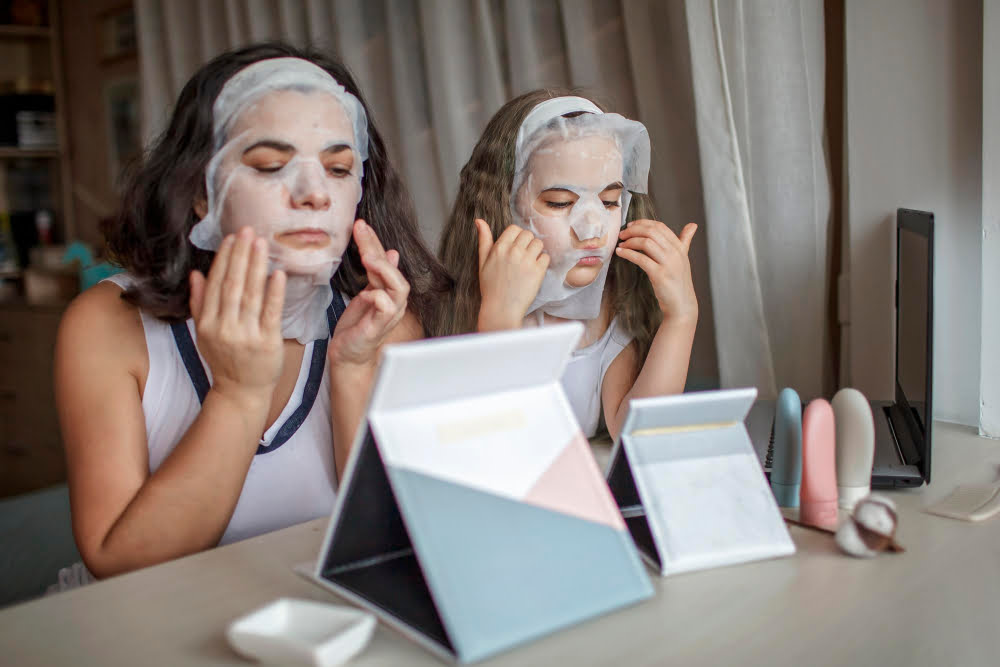Introduction
Having a skincare routine is essential for maintaining healthy and glowing skin. However, with so many products and conflicting advice out there, it can be overwhelming to figure out the best routine for your skin type. In this blog post, we will simplify skincare routines and provide recommendations for every skin type.
Determining Your Skin Type
Before diving into skincare routines, it’s important to determine your skin type. There are four main skin types: normal, dry, oily, and combination.
Normal skin: If you have normal skin, you’re lucky! Your skin is well-balanced, neither too oily nor too dry. You may experience occasional breakouts, but overall, your skin is healthy and easy to manage.
Dry skin: Dry skin often feels tight, especially after cleansing. It can be prone to flakiness and dullness. People with dry skin may also have fine lines and a lack of elasticity.
Oily skin: Oily skin is characterized by excess sebum production, which can lead to shiny skin and frequent breakouts. People with oily skin often have enlarged pores and may struggle with keeping their makeup in place throughout the day.
Combination skin: Combination skin is a mix of oily and dry areas. Typically, the T-zone (forehead, nose, and chin) is oily, while the cheeks are dry. Finding the right balance between hydrating the dry areas and controlling oiliness in the T-zone can be a challenge.
Skincare Routine for Normal Skin
If you have normal skin, your skincare routine can be relatively simple. Focus on maintaining your skin’s health and preventing any potential issues.
Cleanser: Use a gentle cleanser to remove dirt and impurities without stripping away natural oils.
Toner: Apply a toner to balance the skin’s pH levels and prepare it for the next steps.
Moisturizer: Hydrate your skin with a lightweight moisturizer to keep it nourished and protected.
Sunscreen: Protect your skin from harmful UV rays by applying sunscreen with at least SPF 30 every day.
Skincare Routine for Dry Skin
Dry skin requires extra hydration and nourishment to combat its tendency towards flakiness and dullness.
Cleanser: Use a hydrating cleanser that doesn’t strip away moisture.
Exfoliator: Gently exfoliate once or twice a week to remove dead skin cells and promote cell turnover.
Hydrating Serum: Apply a hydrating serum to provide intense moisture and improve the skin’s texture.
Rich Moisturizer: Use a rich moisturizer to deeply hydrate and nourish your skin.
Sunscreen: Don’t forget to protect your skin from the sun’s rays with a broad-spectrum sunscreen.
Skincare Routine for Oily Skin
Managing oily skin involves controlling excess sebum production and preventing breakouts.
Gel Cleanser: Use a gel cleanser to remove impurities and excess oil without stripping the skin.
Exfoliator: Exfoliate two to three times a week to unclog pores and prevent acne.
Oil-Free Moisturizer: Opt for a lightweight, oil-free moisturizer to hydrate your skin without adding extra oil.
Salicylic Acid: Incorporate a salicylic acid treatment to control oil production and prevent breakouts.
Sunscreen: Even oily skin needs protection from the sun, so use a lightweight, oil-free sunscreen.
Skincare Routine for Combination Skin
Combination skin requires a balanced approach to address both dry and oily areas.
Gentle Cleanser: Use a gentle cleanser that doesn’t strip away moisture.
Exfoliator: Exfoliate once or twice a week to remove dead skin cells and unclog pores.
Hydrating Moisturizer: Choose a moisturizer that hydrates the dry areas without making the oily areas greasy.
Spot Treatment: Apply a spot treatment on any breakouts or oily areas to control excess oil production.
Sunscreen: Protect your skin from the sun with a broad-spectrum sunscreen that won’t clog pores.
Conclusion
Skincare routines don’t have to be complicated. By understanding your skin type and following a few simple steps, you can achieve healthy and radiant skin. Remember to cleanse, moisturize, and protect your skin from the sun, regardless of your skin type. With consistent care, your skin will thank you!










